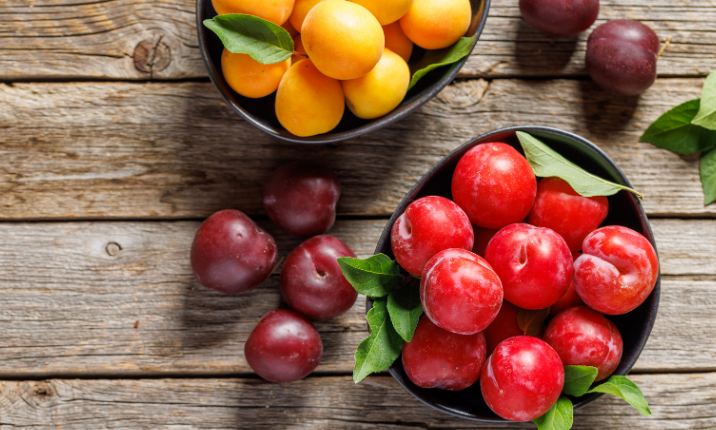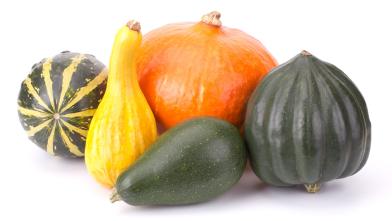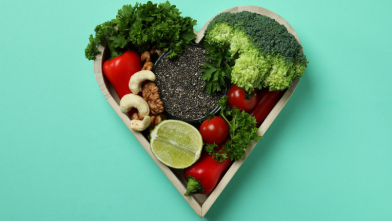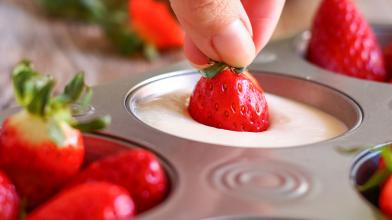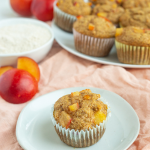
What are Plums?
Plums are part of the stone fruit family, which includes cherries, apricots, and peaches. The term "stone fruit" comes from the large, hard pit or "stone" inside. There are over 200 varieties available across the globe. European plums are famous for their blue and purple colors, which are often used in making prunes. Japanese plums are known for their red and yellow hues and are juicy and sweet.
Fun fact: Prunes, a popular dried fruit snack, are actually dried plums. They’re known for their digestive benefits and are derived from specific plum varieties that have higher sugar content. Prunes are higher in calories, fiber, and carbs than fresh plums.
What Do Plums Taste Like?
Their unique flavor profile makes plums an all-time favorite. Depending on the type and ripeness, plums can be sweet, tart, or a blend of both. Their juicy flesh often bursts with flavor, making them a refreshing snack or a sweet addition to various dishes.
How to Purchase and Store Plums
When shopping for plums, look for firm fruits with a slight give, indicating ripeness. The skin should be smooth and free from blemishes. Once purchased, plums can be stored at room temperature to ripen and then transferred to the refrigerator to maintain freshness for up to two weeks.
How to Eat Plums
The joy of plums extends well beyond enjoying them fresh. They can be used in various culinary creations:
- Salads: Sliced plums add a pop of color and tangy twist to salads.
- Baking: Plums are wonderful in tarts, pies, and cakes.
- Sauces and jams: Cooked down with citrus juice and spices, plums can transform into diabetes-friendly, delightful sauces and jams.
- Grilled and roasted dishes: Grilled plums pair perfectly with meats and roasted vegetables.
Can People with Diabetes Eat Plums?
Yes! Plums can be part of a healthy eating plan to manage blood glucose (blood sugar) levels—and their fiber content can improve digestive health and bowel regularity, support a healthy gut, and aid in weight management efforts by enhancing feelings of fullness.
Other health benefits of plums include:
- Potential risk reduction of chronic diseases like cancer and heart disorders through antioxidants, particularly vitamin C and phenols, that fight against harmful free radicals.
- Improved heart health, healthy blood pressure levels, and potential hypertension and stroke prevention through potassium.
- Potential prevention of osteoporosis through the positive effects on bone density.
- Immune system support through an abundance of vitamins.
- Supported skin health through collagen synthesis.
- Improved eye health through vitamin A.
- Enhanced cognitive function through phytonutrients.
Plums are more than just a tasty fruit, they're a celebration of flavor, versatility, and healthfulness. Whether you're exploring the local farmer's market or venturing into new culinary frontiers, plums can be a delicious and vibrant addition to your diet.
Try these plum recipes:

Plum muffins - These plum muffins combine the goodness of juicy plums with diabetes-friendly ingredients, ensuring a satisfying treat that won't derail your meal eating plan and lets you savor the sweet moments.
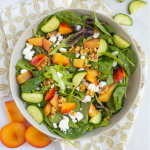
Plum salad with goat cheese and walnuts - Discover a delicious diabetes-friendly plum salad recipe featuring the perfect blend of sweet plums, creamy goat cheese, and crunchy walnuts. This balanced and nutritious salad is a delightful choice for managing your health while savoring bold flavors.

Grilled chicken with plums and zucchini skewers - Elevate your diabetes-friendly dining with our savory grilled chicken skewers featuring succulent plum and zucchini. Indulge in a delectable blend of lean protein and low-glycemic fruits and veggies that's perfect for outdoor gatherings and weeknight meals.
